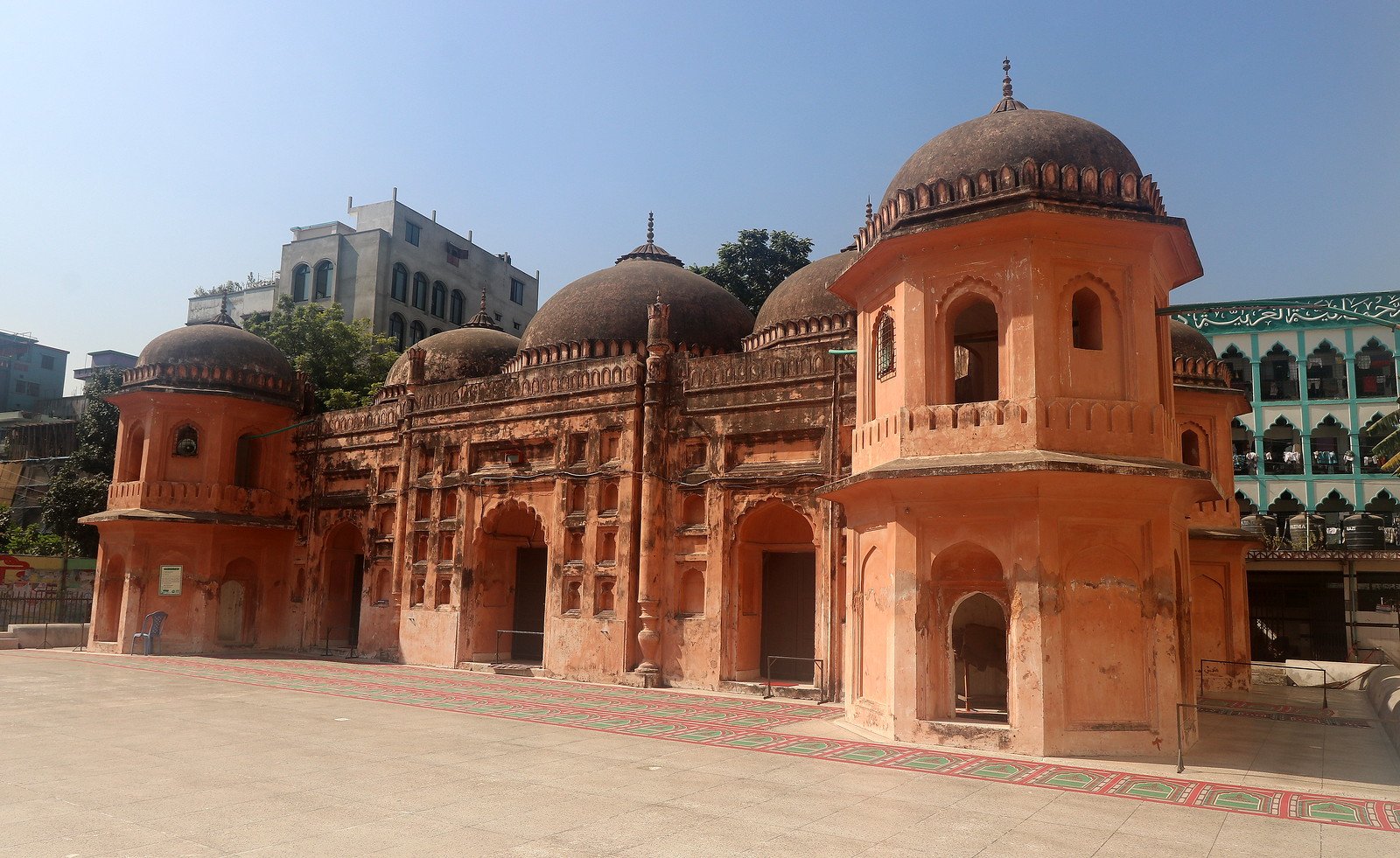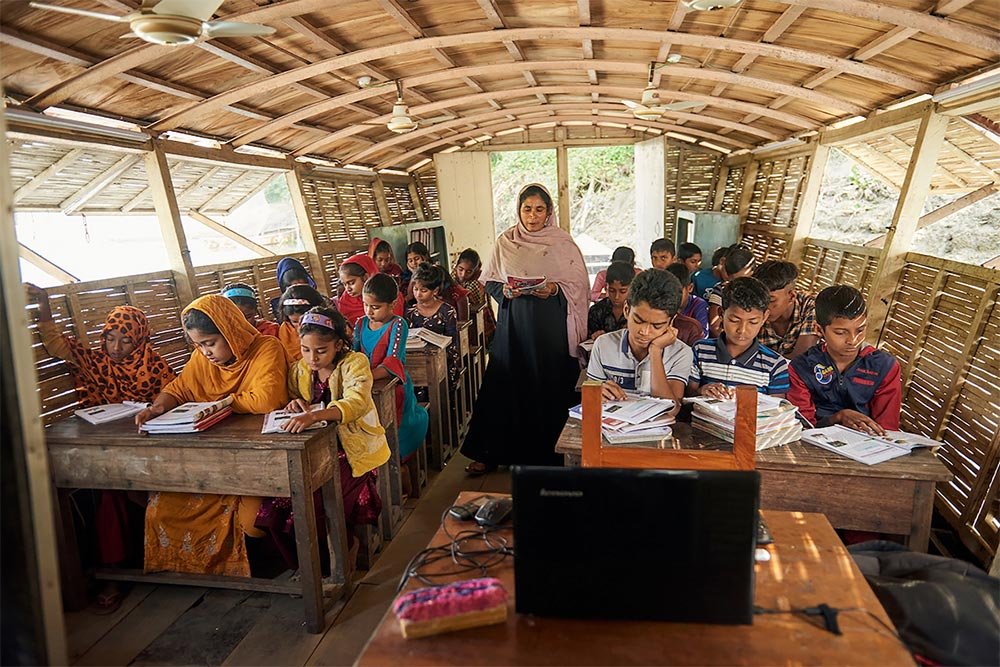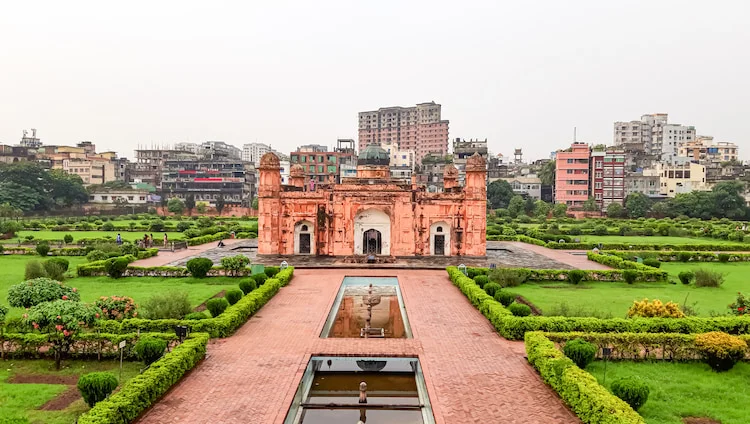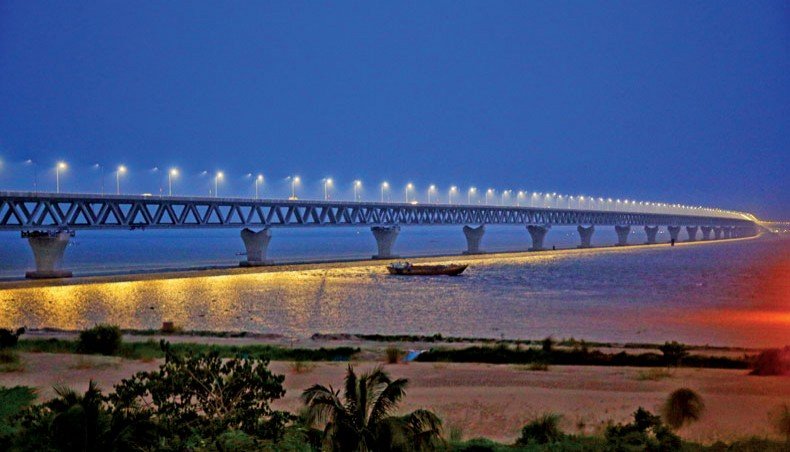Saat Gumbuj Mosque: A 17th-Century Mughal Gem in Dhaka

Saat Gumbuj Mosque: Dhaka’s 17th-Century Mughal Masterpiece
Tucked away in Mohammadpur, Dhaka, the Saat Gumbuj Masjid also known as Seven-Domed Mosque stands as one of the city’s most remarkable yet lesser-known Mughal-era monuments. This mosque, a fine example of provincial Mughal architecture, boasts seven domes (three large central ones and four smaller ones at the corners), a high platform that once overlooked a river, and centuries of cultural, religious, and architectural value.
Historical Background
The exact builder of the mosque remains a matter of local debate. Some believe it was commissioned by Buzurg Uddin Umid Khan, eldest son of the renowned governor Shaista Khan of Bengal. Others attribute it directly to Shaista Khan himself around 1680 AD.
At the time of the mosque’s construction, the Buriganga River (or a major branch of it) flowed close by, enabling worshippers to arrive by boat during monsoon seasons. A painting from 1814 by Sir Charles D. Wylie shows the mosque standing by the riverbank.
Over time, the river’s course shifted, and urban development closed in around the mosque, yet the structure continues to act as a witness of Dhaka’s Mughal past.
Architectural Features
The mosque’s design exemplifies how Mughal architectural vocabulary was adapted to Bengal’s environment:
The rectangular prayer hall measures approximately 14.33 m × 4.88 m internally, and 17.68 m × 8.23 m externally.
It features three large domes over the main hall plus four smaller domed corner towers, making the total seven — hence the name “Seven‐Domed Mosque.”
The structure sits on a high platform (ca. 15 ft in some descriptions) which originally allowed it to rise above flood plains and the riverbank.
The eastern facade includes three arched entrances leading to the central bay; the western qibla wall has three mihrabs with the central one raised and richly decorated.
On the exterior, curved cornices, blind niches, engaged pilasters, and lotus/kalasa finials illustrate the blend of local and imperial styles.
These features highlight how Mughal architectural principles were re-interpreted in Bengal’s riverine, alluvial context — favouring brick and stucco rather than grand stone.
Surroundings and Setting
Originally perched beside a riverbank, the mosque now finds itself in a densely built-up Mohammadpur neighbourhood. To the east lies a lawned garden (open especially on major Islamic festivals) and to the west is a large madrasa built in 1986.
There is also an unknown tomb adjacent to the mosque — believed by some to be the mausoleum of Shaista Khan’s daughter. This tomb is octagonal inside but quadrangular from the outside.
Cultural & Religious Significance
Though centuries old, the mosque remains a functioning place of worship. The central prayer hall can accommodate about a hundred worshippers, and the overall site continues to be under the care of the local community, with oversight from the Department of Archaeology, Bangladesh.
Its significance goes beyond mere architecture: it ties into the story of Dhaka’s expansion, river commerce, Mughal governance, and the living heritage of Bangladesh. The mosque forms part of the larger narrative of Mughal mosques in Bengal — monuments that combined religious function with social and political symbolism.
Conservation Status & Challenges
The Seven-Domed Mosque is a protected heritage site under Bangladesh’s archaeology department. However, like many Mughal-period sites in Dhaka, it faces pressures from urban encroachment, river course changes, and the challenge of integrating heritage preservation with a rapidly changing cityscape.
Efforts have been made to restore and maintain the mosque, but continuous monitoring and advocacy remain necessary to ensure its integrity and visibility in the community.
Why the Seven-Domed Mosque Matters
Architectural rarity: Not many mosques in Bengal combine three central domes with four corner domed towers, creating a distinctive silhouette.
Historical depth: It connects to the period of Shaista Khan’s rule when Dhaka was a major administrative centre of the Mughal Empire.
Hidden gem status: Amid Dhaka’s rapid urbanisation, the mosque lies somewhat off the tourist track — offering a quieter but profound heritage experience.
Living heritage: It’s not just a monument — it remains a functioning mosque, bridging the past and present.
Visiting Tips
Location: Banshbari Road of Chan Mia Housing, Mohammadpur, Dhaka.
Photography: Early morning or late afternoon light best highlights the domes and platform.
Respect: Modest attire is recommended; as an active mosque, visits should be during non-prayer times if intending to photograph.
Combine with nearby heritage sites: Consider visiting other Mughal sites in Dhaka for a fuller heritage route.
The Seven-Domed Mosque in Dhaka may not have the fame of Lalbagh Fort or the Star Mosque, but it holds a unique place in Bangladesh’s heritage landscape. With its seven domes rising above a platform once beside the Buriganga, it tells stories of riverside worship, Mughal patrons, architectural innovation, and the enduring faith of communities.
Preserving and celebrating this hidden Mughal gem is not just about bricks and domes — it’s about recognising the layers of culture, faith, and history that shape Dhaka today.






